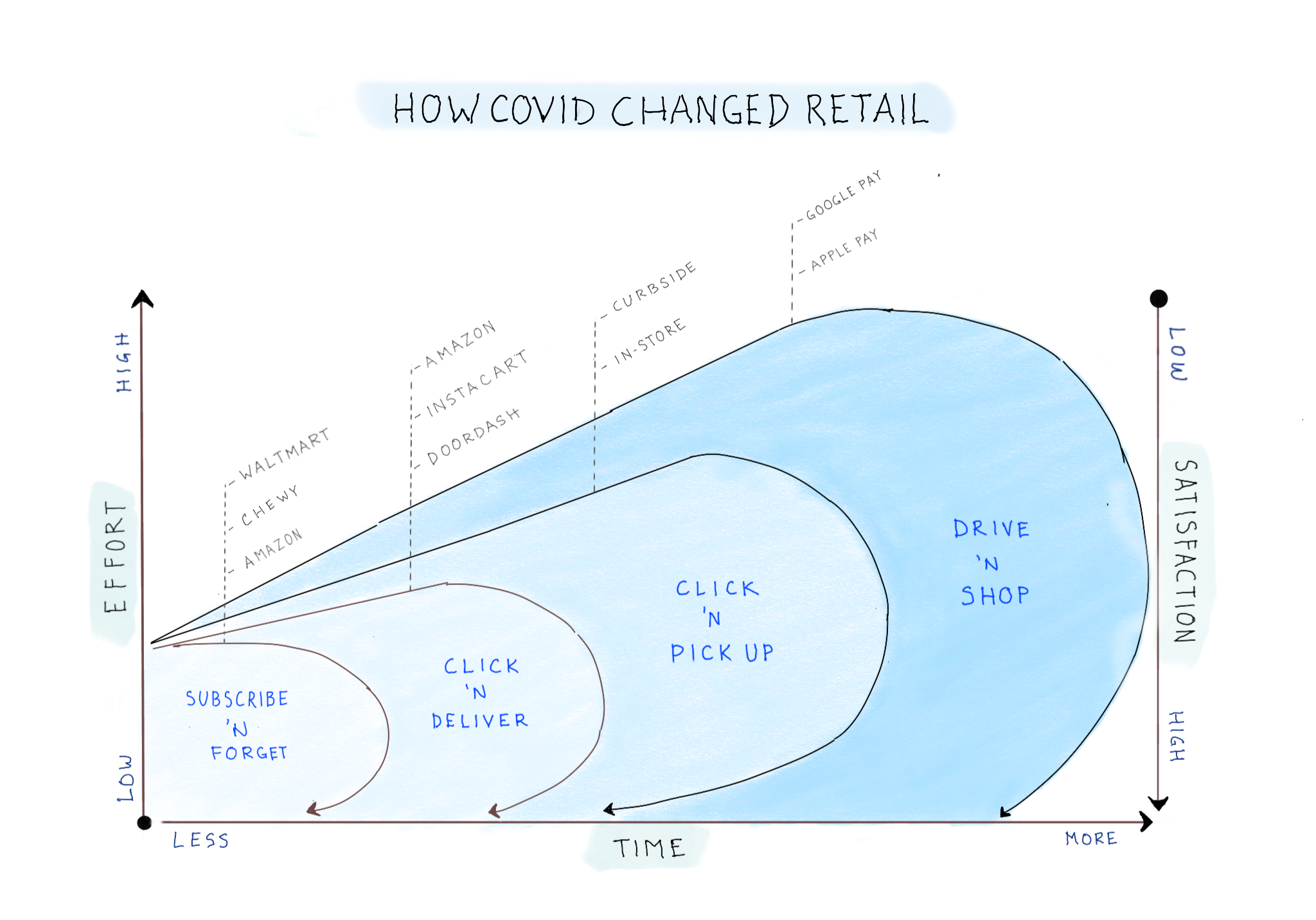The transformation in retail that started in 2020 is not about new trends. Rather, it is defined by mass adoption of services that were previously offered by only selected retailers. The new purchase journey now takes four distinct paths: 1) drive and purchase – travel to a brick-and-mortar store; 2) click and pick – purchased online and pickup at the store; 3) click and deliver – purchase online and have the item delivered; and 4) subscribe and forget – subscribe online and have the item delivered a regular interval (CPG brands). Consumers have adapted to these services and clearly see trade-off between time/effort and money. The retailers that will come out on top will be those that can offer the most frictionless purchase journeys.
Notebook Thoughts: Enabling the Healthcare Journey
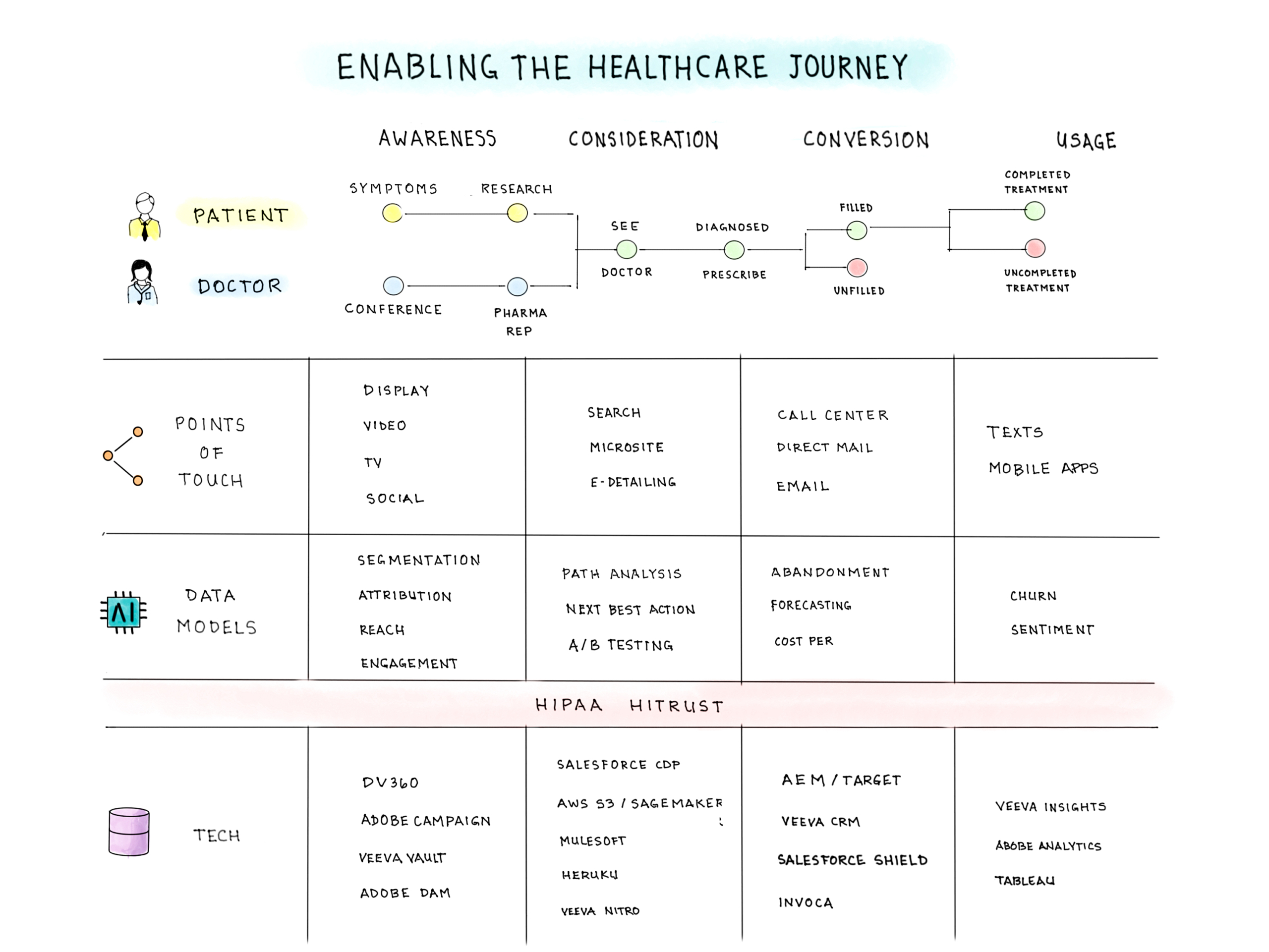
From a marketing perspective, enabling the healthcare or prescription journey is a complex landscape of intertwined stakeholders, regulations, technologies and touchpoints. The interests and needs of healthcare providers (HCPs) and patients will converge and diverge at different points. Having the right technology infrastructure and targeting strategies is key to the successful completion of this journey.
As usual, my sketch over simplifies things but it does capture the key technology platforms, data models and touchpoints at each stage of the journey. For the most part, platforms and strategies stack on top of previous ones as we move along the journey–rather than being solely use in one stage. Given that healthcare is a highly regulated industry, a strong privacy and data governance strategy is of the upmost importance.
Notebook Thoughts: Machine Learning for Dummies
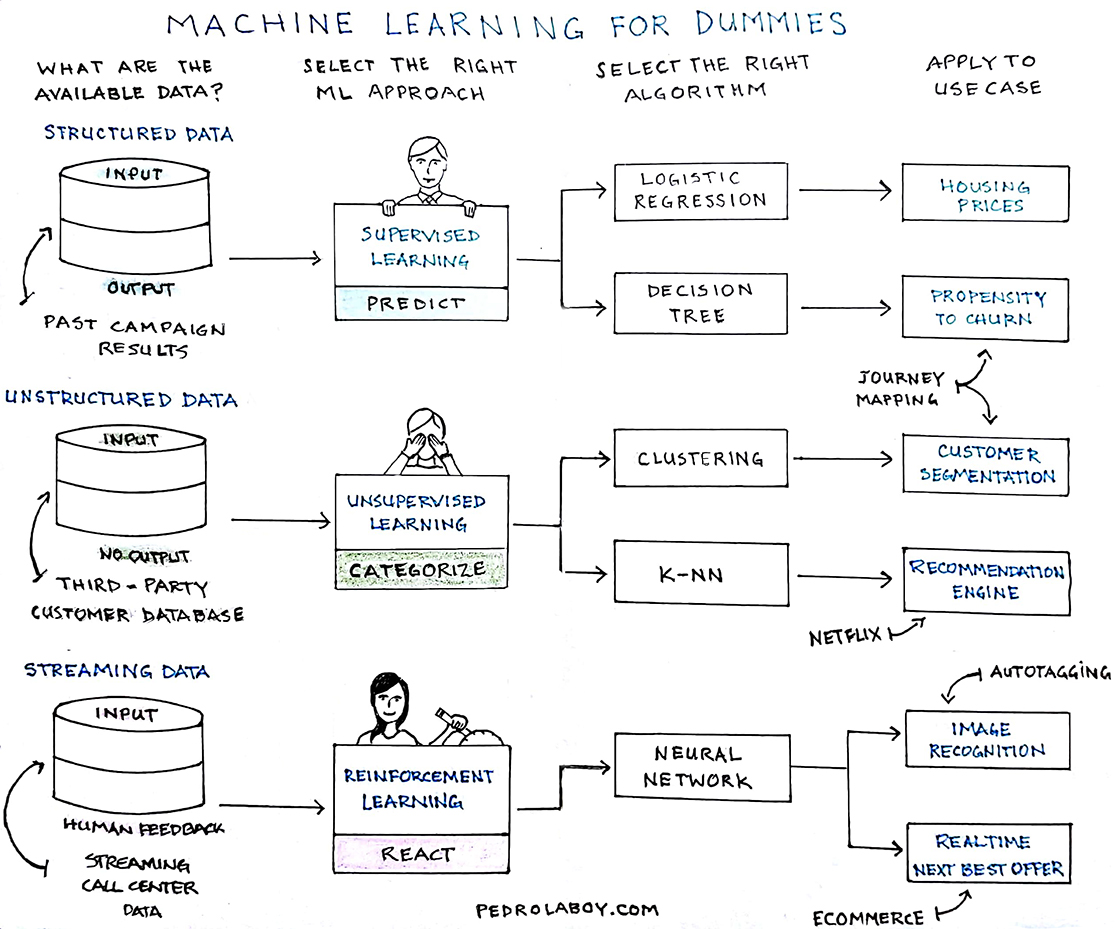
Machine learning is an evolving and complex science. If one takes into account all possible scenarios, dependencies and models, it would be impossible to sketch an all-encompassing explanation. So I will focus on what the non-data scientist should know about machine learning. That is, they should focus on understanding available data, machine learning types, algorithm models and business applications.
1. First, determine if what is the nature of the available data. Do you have historical campaign data with historical results or an unstructured database of customer records? Or are you trying to make real-time decisions on streaming data?
2. The data available–and use case–will determine the appropriate machine learning approach. There are three major types: supervised, unsupervised and reinforcement learning. a) Supervised Learning allows to you to predict an outcome based on input and output data (e.g. churn). b) Unsupervised Learning allows to you categorize outcomes based on input data (e.g. segmentation). c) Reinforcement Learning allows you to react to an environment (e.g. driverless car).
3. Each machine learning type will use a number of algorithm. There are hundreds of variations. Supervised Learning typically uses regression or classification algorithms. Unsupervised Learning uses, but is not limited to, clustering algorithms. Reinforcement Learning will usually use to type of neural network algorithm.
4. The uses of machine learning are nearly limitless. Although I listed here as the last step, determining the use case or business application should probably be the first step. For example, we would use logistic regression to determine whether a house would sell at a certain price or not and we would use linear regression to predict the future price of a house. You should keep in mind that machine learning business applications typically require the use of more than one machine learning type as well as multiple algorithms.
I hope this sketch serves as a useful guide. Feel free to share and use as needed.
Thoughts and comments as well as suggestions for other sketched explanations are welcomed.
Notebook Thoughts: The Modern Technology Stack
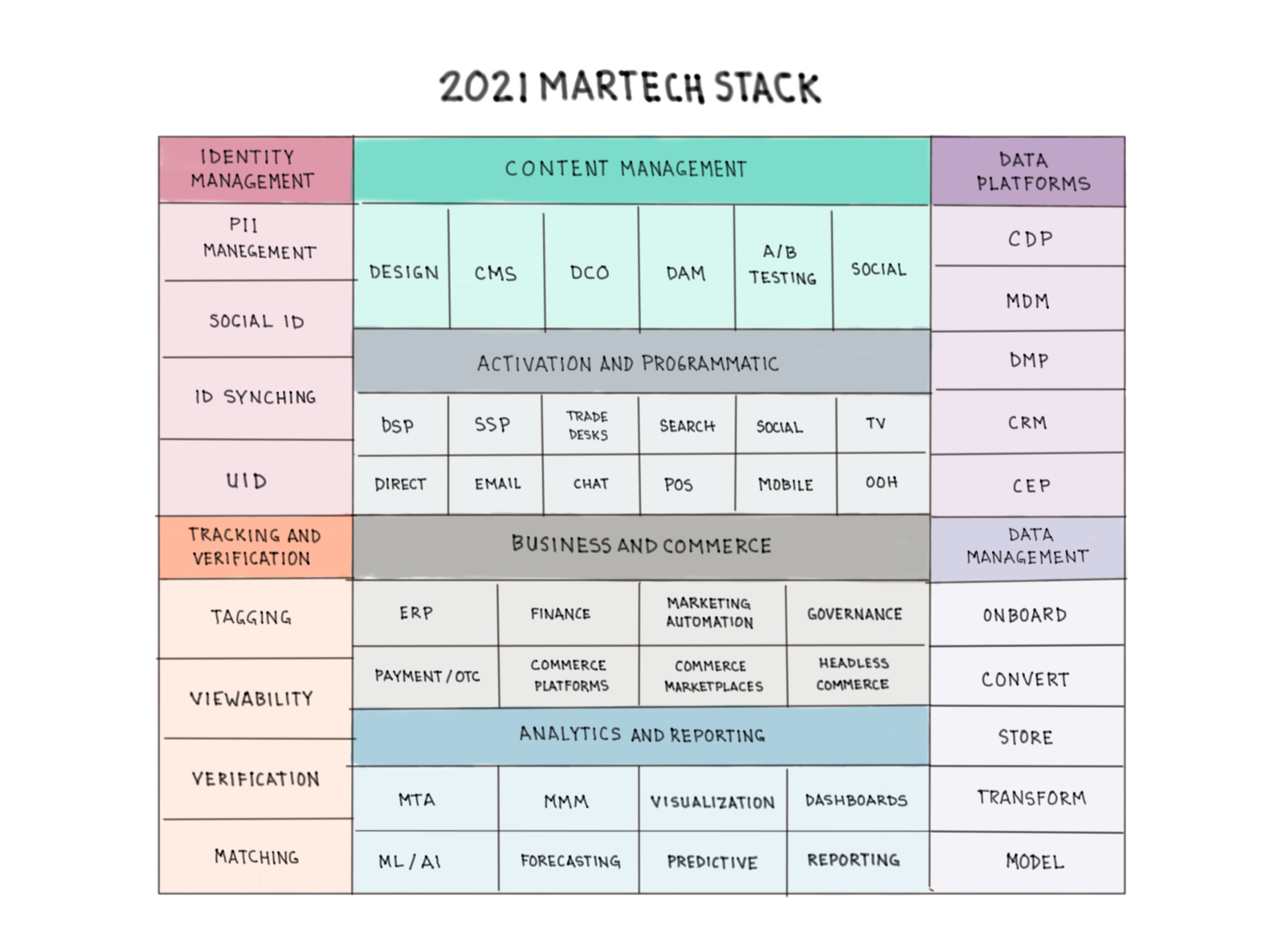
This is just a simplified reference architecture of today’s marketing technology stack. Excuse all the acronyms but I will be doing a post soon on the most used/overused acronyms in marketing.
Notebook Thoughts: 15 Trends That Are Disrupting Marketing
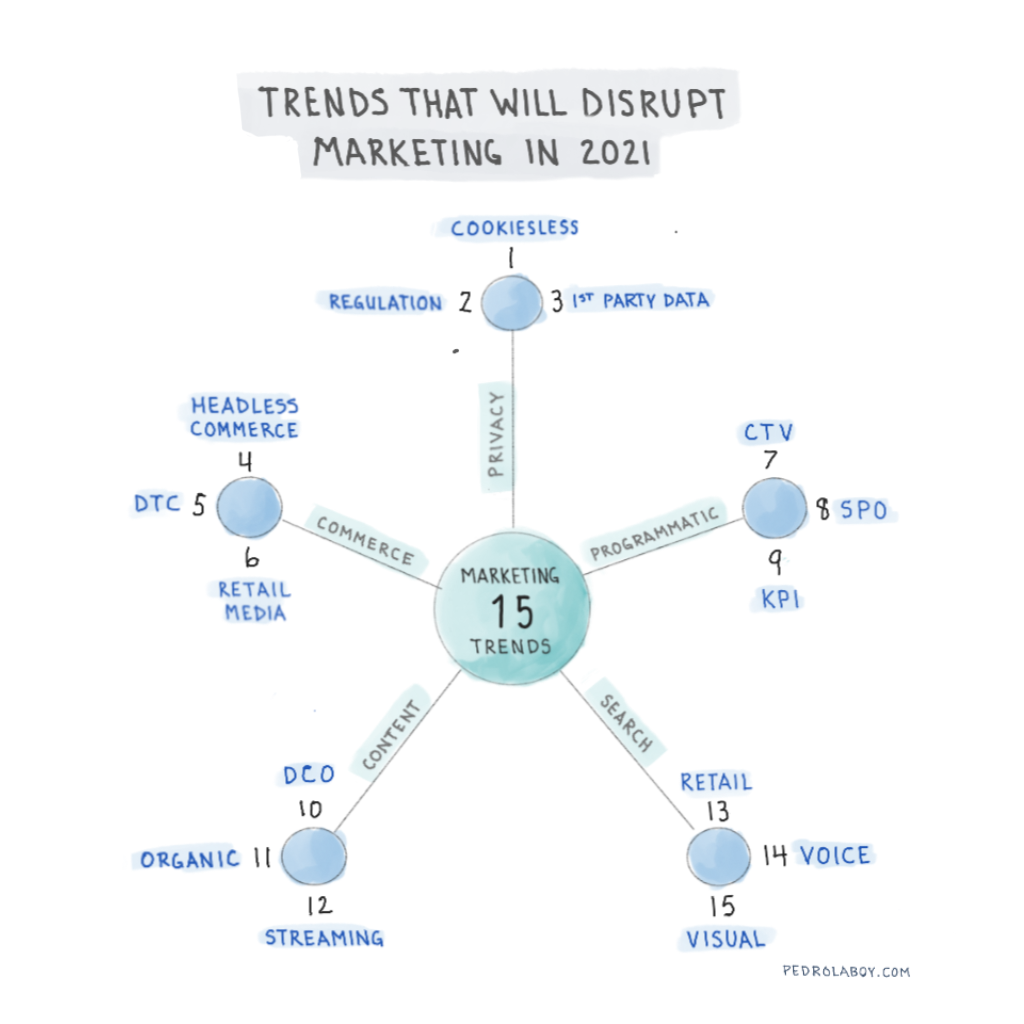
Privacy and Data:
- The Cookie Crumbles – With Google following on Apple and Mozilla’s steps and putting in motion plans to phase third-party cookies, marketers will have to reassess how they track and target customers. Apple’s coming changes to its Mobile OS tracking policies will only compound the problem for brands. While we don’t know exactly what will replace third-party cookies (i.e. Sandboxes, FLOCs, etc.), content will be king and contextual targeting will make a comeback.
- GDPR and Privacy Regulations – The effects of GDPR have been felt far beyond the EU as brands embrace it as the gold standard to safeguard consumers’ privacy. In the US multiple states have introduced laws similar to California’s CCPA. Furthermore, Japan, India, Canada, Brazil and Korea have passed privacy laws similar to GDPR. In 2021, governments across the world will continue to enact stringent privacy laws.
- First Party Data and Universal IDs – These changes will force brands to either develop robust first-party data assets or be at the mercy of Walled Gardens—likely both. 2021 will see significant investments in the technology infrastructure and partnerships needed to build these assets. Another way to counter the Walled Gardens will be to use Universal IDs from vendors such as The Trade Desk, the Advertising ID Consortium or ID5. However, until an industry standard is accepted, identity management will be something marketers will have to focus on.
Ecommerce:
- Headless Commerce – Headless commerce, which is the decoupling of backend and frontend operations, is a must of any brand that wants to compete in digital commerce. One area where marketers need to quickly pivot is social as it has it shifts from being a mostly brand channel to becoming a performance medium. For more on headless commerce, see my other post.
- Direct to Consumer – One of the doors that headless commerce opens, is that it makes easier to CPG brands to bypass retailers and sell direct to consumers. From Procter & Gamble to Colgate, CPG brands are rushing to build the infrastructure needed to reach consumers directly. This will also require that CPG marketers expand their skillset.
- Retailers as Media Networks – Another trend that will continue to proliferate is that of retailers becoming their own media networks. This is a strategy that Amazon mastered early on and now other retailers (i.e. Home Depot, Target, Walmart, Instacart, etc.) are trying to mimic. These retailers are now becoming mini walled gardens. In 2021, the retail media landscape will continue to fragment and marketers will have to deal with a more complex media landscape.
Programmatic:
- Connected TV – Connected TV is expected to grow 30% to 205 million users by the end of 2021. With a myriad of vendors now offering solutions that allow for the delivery of targeted content both dynamically and programmatically, marketer must rethink content and strategies.
- Supply Path Optimization – Although it is not something new, the proliferation of SSPs and DSPs has made programmatic supply path optimization (SPO) a priority for 2021. SPO has two major components. On one hand, it consolidates and prunes inefficient SSPs. On the other hand, is uses machine learning to determine the most optimal path to inventory.
- Business KPIs – As the current recession puts pressure on marketing budgets, marketers are demanding that programmatic strategies be optimized to business performance indicators and not simply impressions, clicks or engagements. Machine learning now gives marketers to optimize their media buys based on content, product inventory or profitability.
Content:
- Dynamic Content Optimization – Investments in technology and data will not only allow marketers to identify the right consumers but also to deliver content and messaging dynamically and at scale through Dynamic Content Optimization (DCO). Today, this is easier than ever for both small and large brands. For example, marketer can use solutions from Adobe, Salesforce, and Oracle to dynamically manage content in their digital properties and at the same time use solutions from Flashtalking, Jivox and Sizmek to optimize their media content.
- Organic – Creating, managing and optimizing organic content should be at the top of any marketing strategy for 2021. One catalyst for this will be Google emphasis on its EAT (Experience, Authority and Trust) algorithm. Under EAT, Google will give higher ranking to pages that demonstrate relevant quality and context. Another catalyst is the reduction in paid media and marketing budgets due to the current recession.
- Streaming and Video – The pandemic has brought streaming services, video content and video chat technologies to the forefront. Two trends are of note. First, streaming has become nearly universal so it must be part of every marketer’s strategy. Second, the subscription model will not be enough for all players to survive. Thus, advertising opportunities will be abound and the largest of these streaming services will become walled gardens. Finally, the introduction of 5G technology will mean that streaming content will be increasingly consumed through mobile devices.
Search:
- Retail – Google might still be king of the hill when it comes to search but it is no longer the only name in town. In particular, when it comes to products 54% of searches now take place through Amazon. As more retailers become media networks, search strategies can no longer focus solely on Google and must include a multi-pronged approach.
- Voice – 50% of consumers a currently use voice search and by the end of 2021 sales of smart speakers will surpass that of tablets. Marketers will have to rethink their keyword query strategies and take into account speech patterns as they integrate voice into their search marketing strategies.
- Visual – Given that 90% of all information processed by the brain is visual, Visual Search is the natural evolution of where consumers are going. This is already the case in 2021. For example, there are over 600 million visual searches on Pinterest every month and Google Lens has reached 500 million downloads in the Play Store. Marketers must now take into account how consumers visually search and how the consume/use visual search returns.
Notebook Thoughts: An AI Guide to Marketing

Abundance of data and advances in technology–including the proliferation of low code and no code platforms–means that Artificial Intelligence and Machine Learning (AI/ML) Marketing is at the finger tips of most organizations. If we think in terms of Data, Technology, People, and Process, the first two are not the impediment to leveraging AI/ML to drive marketing effectiveness and sales. Rather, it is the shortage of skilled people and the lack of understanding of which models and processes solve different marketing challenges.
I put this basic framework together to give an idea of different AI/ML techniques and their applications in marketing. Do keep in mind that the combination of models and applications can number in the hundreds. This is why skilled data scientists and data engineers are so important to marketing organizations. To keep things simple I selected 12 tactics with their respective algorithms across four categories.
SEGMENTATION
Product Segmentation <> Collaborative Filtering
Journey Stage Segmentation <> Gaussian Mixture
Behavioral Segmentation <> K-Means
PREDICTION
Churn <> Logistic Regression
Conversion <> Decision Tree
Customer Lifetime Value <> Random Forest, XG Boost
PERSONALIZATION
A/B Testing <> Multi-Arm Bandit
Timing <> Sequence Analysis
Next Best Action <> Nearest Neighbor
LANGUAGE
Sentiment <> Convolutional Neural Network
Semantic Search <> OWL-Search
Content Extraction <> Support-Vector Machines
Again, any of these marketing tactics could use completely different AI/ML models or non at all depending on what we are trying to solve.
For more on this topic, see my other blog posts on understanding and applying machine learning.
Notebook Thoughts: Google vs Facebook Ecommerce Solutions
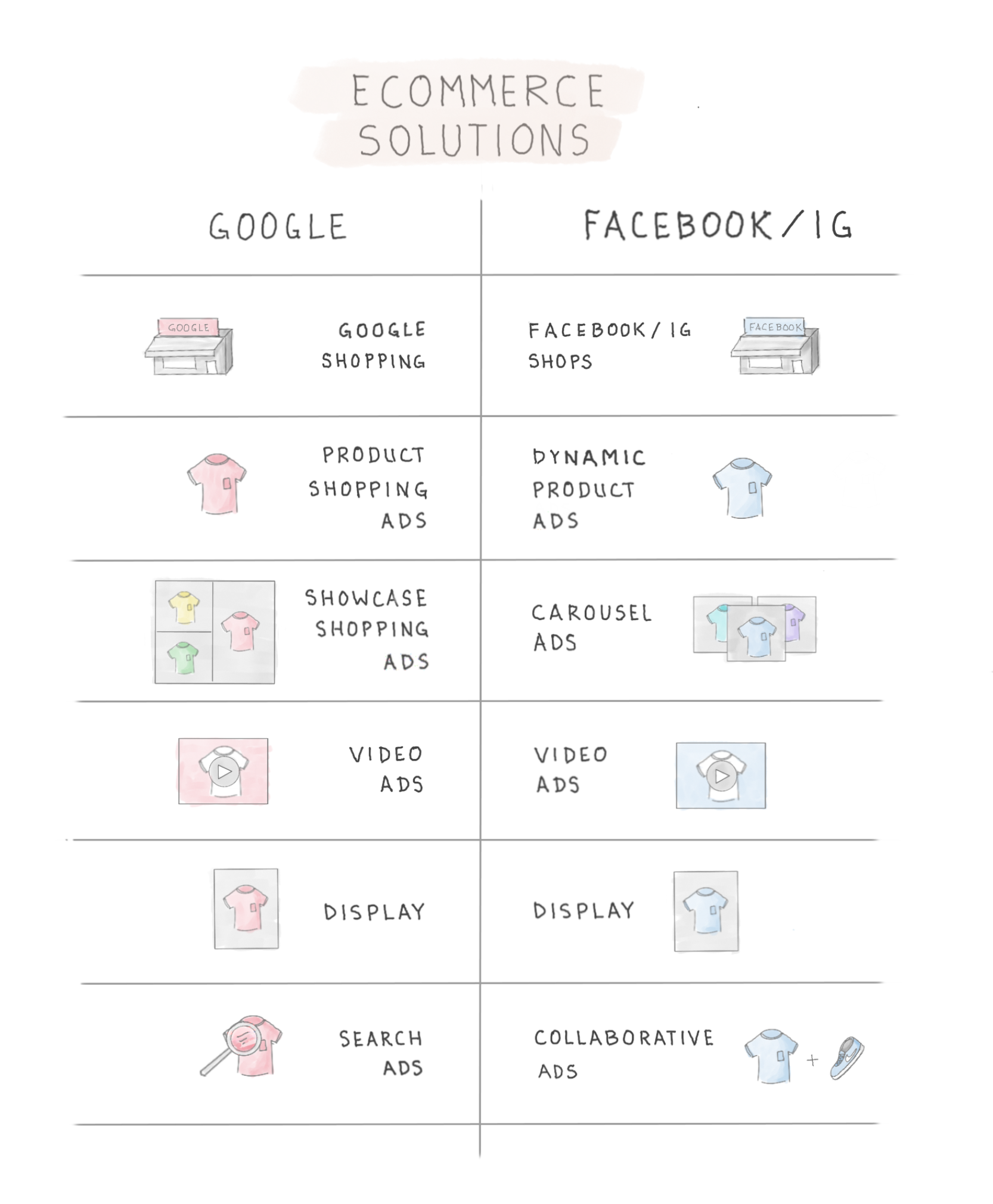
This is simple guide of ecommerce advertising solutions offered by Google and Facebook / Instagram. There is, of course, a lot more to it than the brief descriptions provided below.
SHOPS: Googles Shopping is basically a shopping channel where products are searchable but transactions occur at the brand’s website. IG/FB shops are online stores where transactions can take place within the app or at the brand’s website
PRODUCT LISTINGS: Google Shopping Ads, also known as Product Listing Ads, are single product ad units. Facebook’s equivalent are the Dynamic Product Ads.
MULTI-PRODUCT LISTINGS: Showcase Shopping Ads and Carousel Ads are Google and Facebook’s respective product ad units that allows for the listing of multiple related or unrelated products.
VIDEO ADS: Video Ads on Google can be served on YouTube or across the Google Display Network. Formats vary and can include live-streaming. FB/IG’s video ads can appear in Feed or Stories and can also include live-streaming.
DISPLAY ADS: Google’s display ads can be served across the Google Display Network. Similar to video, FB/IG’s display ads can appear in Feed or Stories as well as through the Facebook Audience Network.
SEARCH ADS: Google Search Ads are ad units that appear alongside search results based on relevant keywords. They can include ad extensions which allow the brand to include product or business details.
COLLABORATIVE ADS: Facebook Collaborative Ads allow brands that sell products through retailers and merchants to run direct sales campaigns
Notebook Thoughts: Behavioral vs Contextual Targeting
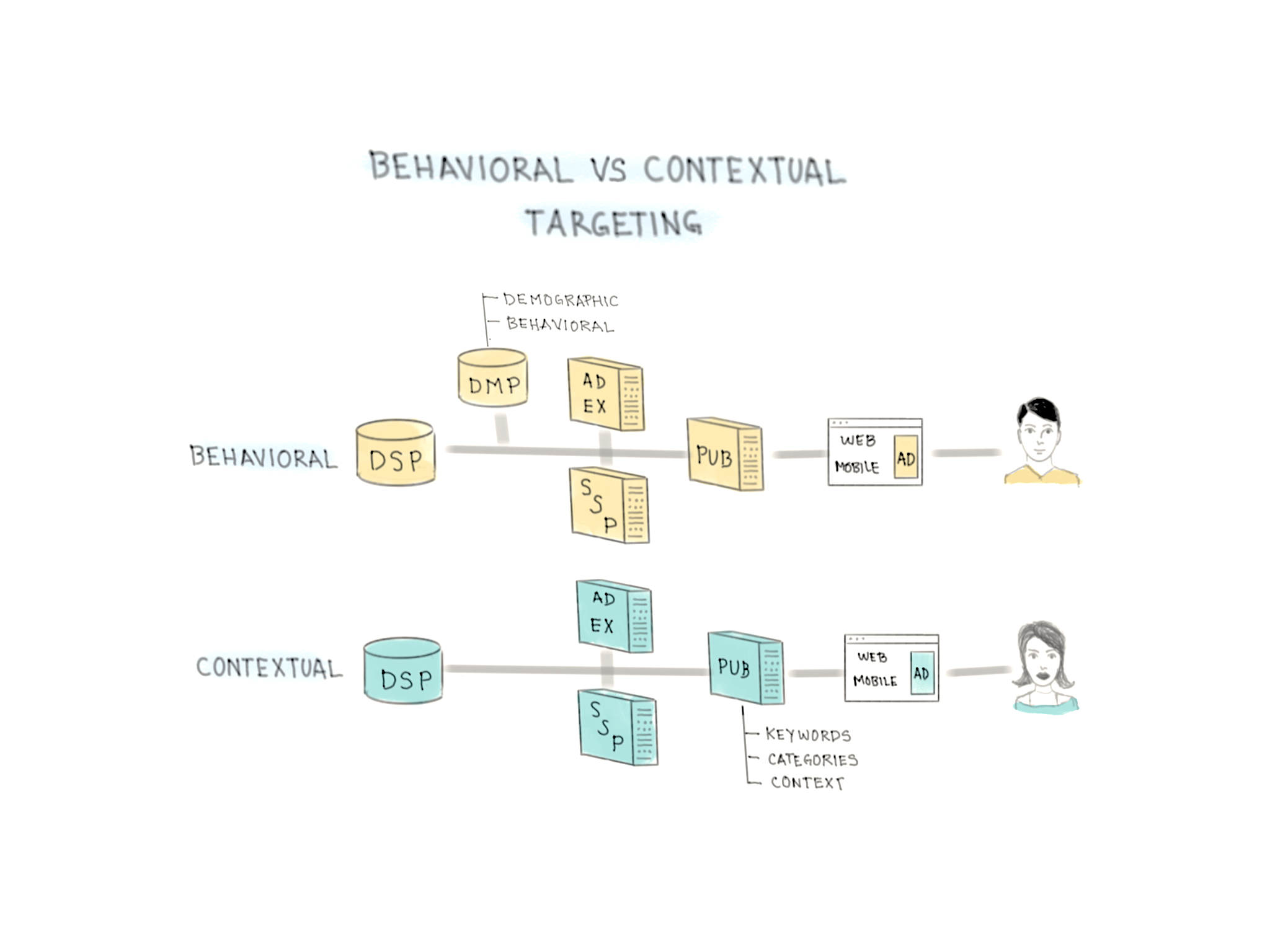
Contextual targeting is done through the use of keywords and categories. For example, we might serve an ad for Nike basketball shoes on the NBA website. Behavioral targeting relies on known user behaviors that have been tracked using cookies and is sometimes enhanced with demographic data. With third-party cookies phasing out, contextual targeting is making a comeback.
Notebook Thoughts: The Foundation of a Great Data Story
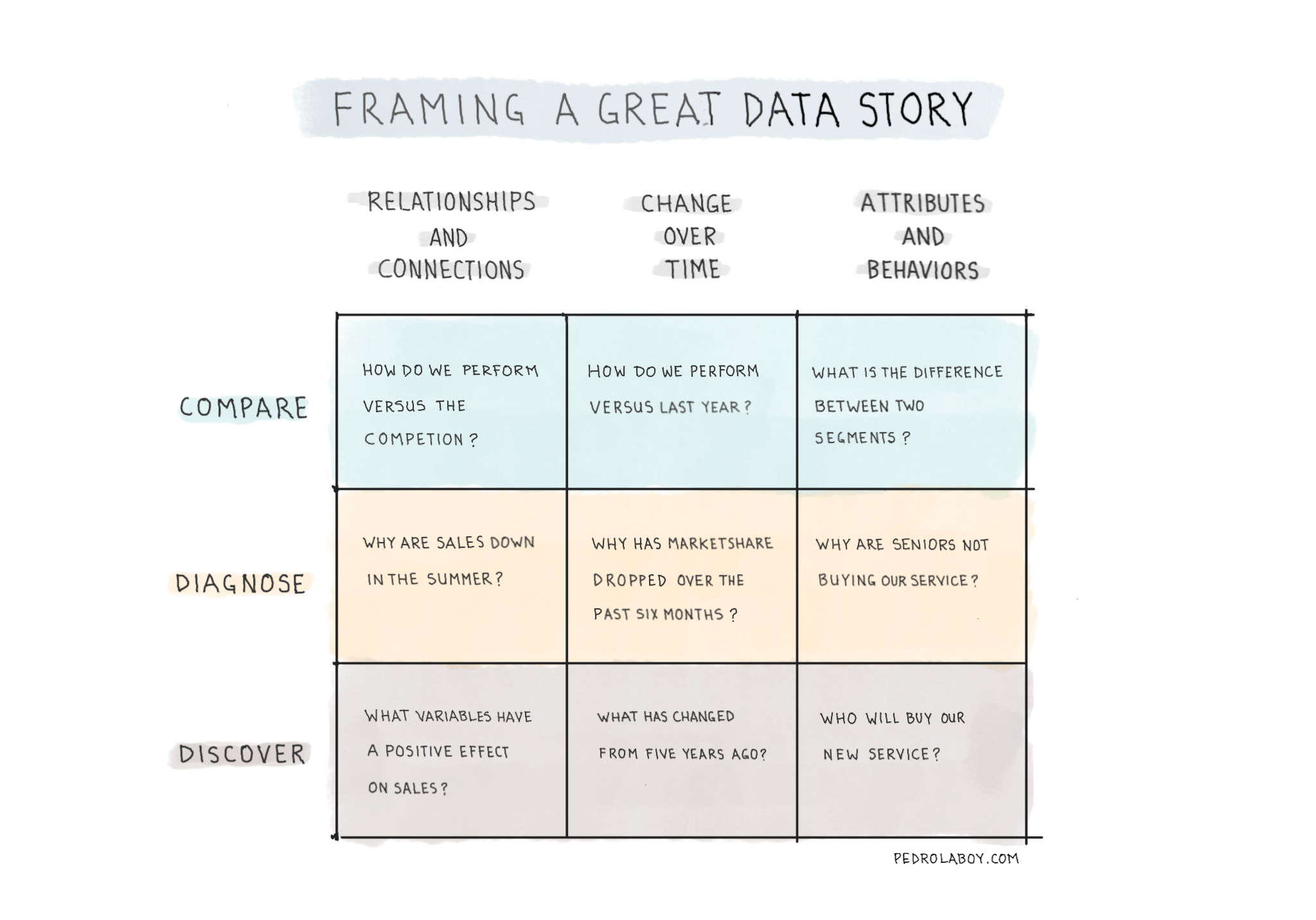
Telling a great data story begins with framing the what and the how of the questions we would like to answer. We can use our data to compare, diagnose and discover information or insights about relationships/connections, shifts over time and attributes/behaviors. However, the best answers usually are the product of a creative combination of approaches and datasets.
Notebook Thoughts: Understanding Headless Commerce
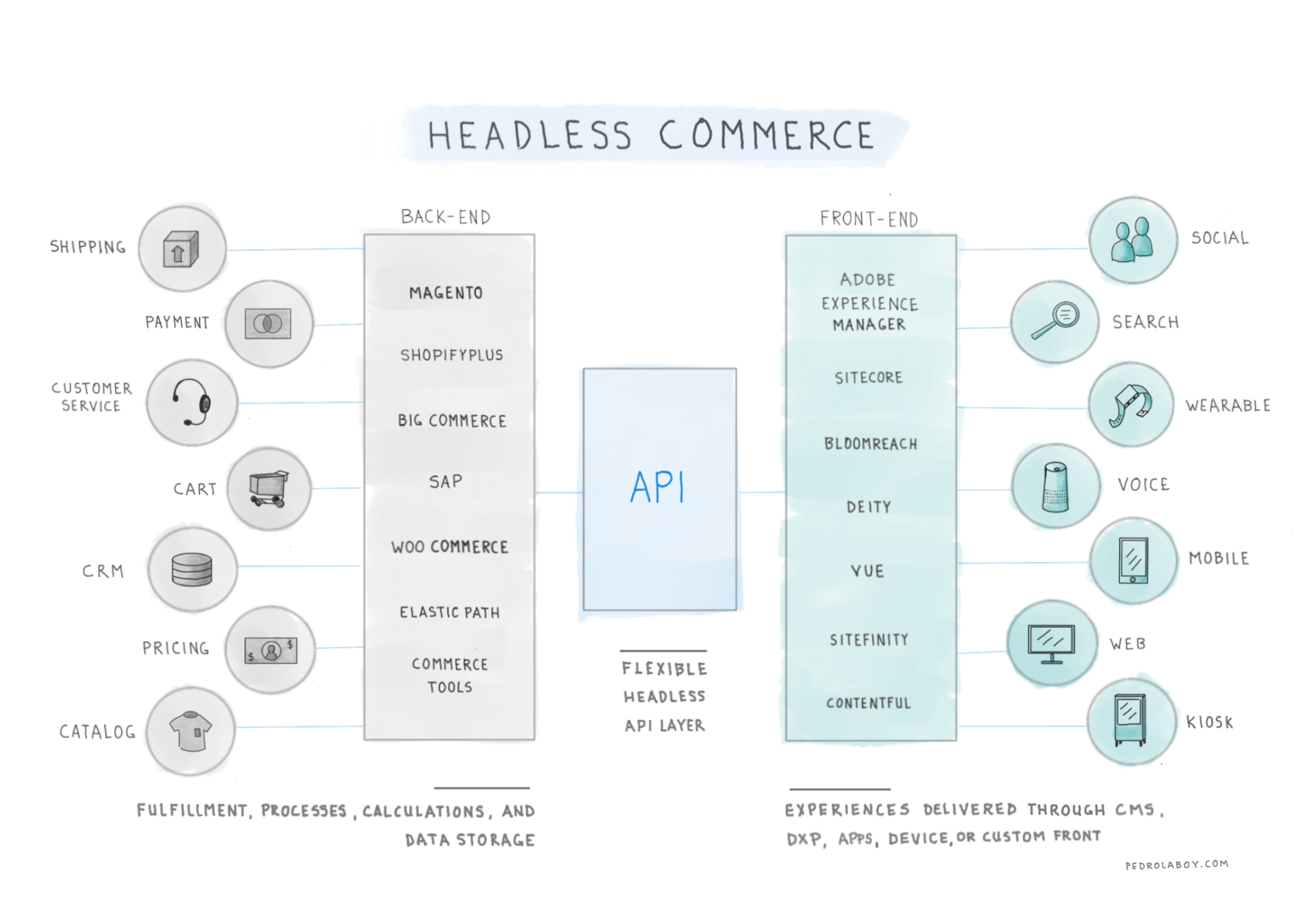
Headless commerce decouples back-end platforms responsible for fulfillment, operations, processes, calculations and data from front-ed platforms responsible for delivering experiences through technologies such as CMS (content management systems), DXPs (digital experience platforms), PWAs (progressive web applications) or custom solutions. One can say that the back-end is “headless” and front-end offers multiple “heads.” This is made possible through the use of a flexible API layer

